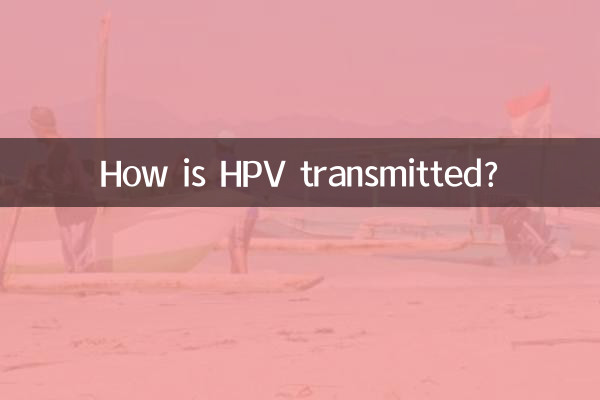How is HPV transmitted?
In recent years, HPV (human papillomavirus) infection has become one of the health topics of public concern. With the popularization of medical knowledge, more and more people are paying attention to the transmission routes and preventive measures of HPV. This article will combine the hot topics and hot content on the Internet in the past 10 days, conduct a structured analysis of the transmission methods of HPV, and provide relevant data and prevention suggestions.
1. Basic information about HPV

HPV is a common sexually transmitted virus with more than 200 known subtypes, about 40 of which can infect the genital area. Based on the risk of cancer, HPV is divided into high-risk and low-risk types. High-risk HPV types may cause malignant tumors such as cervical cancer and anal cancer, while low-risk types may cause benign lesions such as genital warts.
| HPV types | Related diseases | risk level |
|---|---|---|
| HPV-16, 18 | Cervical cancer, anal cancer | high risk |
| HPV-6,11 | genital warts | low risk |
| HPV-31, 33 | cervical precancerous lesions | high risk |
2. Main transmission routes of HPV
HPV is transmitted in various ways, the following are its main transmission routes:
| Transmission route | Specific instructions | infection risk |
|---|---|---|
| Sexual contact transmission | Including vaginal sex, anal sex, oral sex, etc. | high risk |
| Skin and mucous membrane contact | Infection through contact with broken skin or mucous membranes | medium risk |
| mother-to-child transmission | Infant exposure to infection during delivery | low risk |
| indirect contact | Spread through shared towels, clothing and other items | low risk |
3. Preventive Measures for HPV Infection
The key to preventing HPV infection is to reduce high-risk behaviors and take scientific protective measures:
| Precautions | Specific methods | effectiveness |
|---|---|---|
| Get HPV vaccine | Recommended for people aged 9-45 years old | Efficient |
| use condoms | Reduce the risk of sexual transmission | Medium effect |
| Regular screening | Cervical cancer screening (TCT, HPV testing) | Efficient |
| maintain hygiene | Avoid sharing personal items | Inefficient |
4. Common misunderstandings about HPV
In the past 10 days of online discussions, the following misunderstandings about HPV are worth noting:
1.Misunderstanding:Only women can become infected with HPV.
fact:Men can also be infected with HPV and may cause related diseases.
2.Misunderstanding:HPV infection can definitely lead to cancer.
fact:Most HPV infections are cleared by the immune system; only persistent infection can cause cancer.
3.Misunderstanding:Only unmarried women need to get the HPV vaccine.
fact:Married or sexually active women may also benefit from vaccination.
5. Summary
HPV is mainly spread through sexual contact, but there are other ways of transmission. Understanding how HPV is transmitted and preventive measures can help reduce the risk of infection. Getting the HPV vaccine, regular screening, and practicing safe sex are effective ways to prevent HPV infection. The public should understand HPV scientifically, avoid falling into misunderstandings, and protect the health of themselves and their partners.
Through the presentation of structured data, we hope to help readers understand the infection mechanism and prevention strategies of HPV more clearly. If you have further questions, it is recommended to consult a medical professional for personalized advice.

check the details

check the details